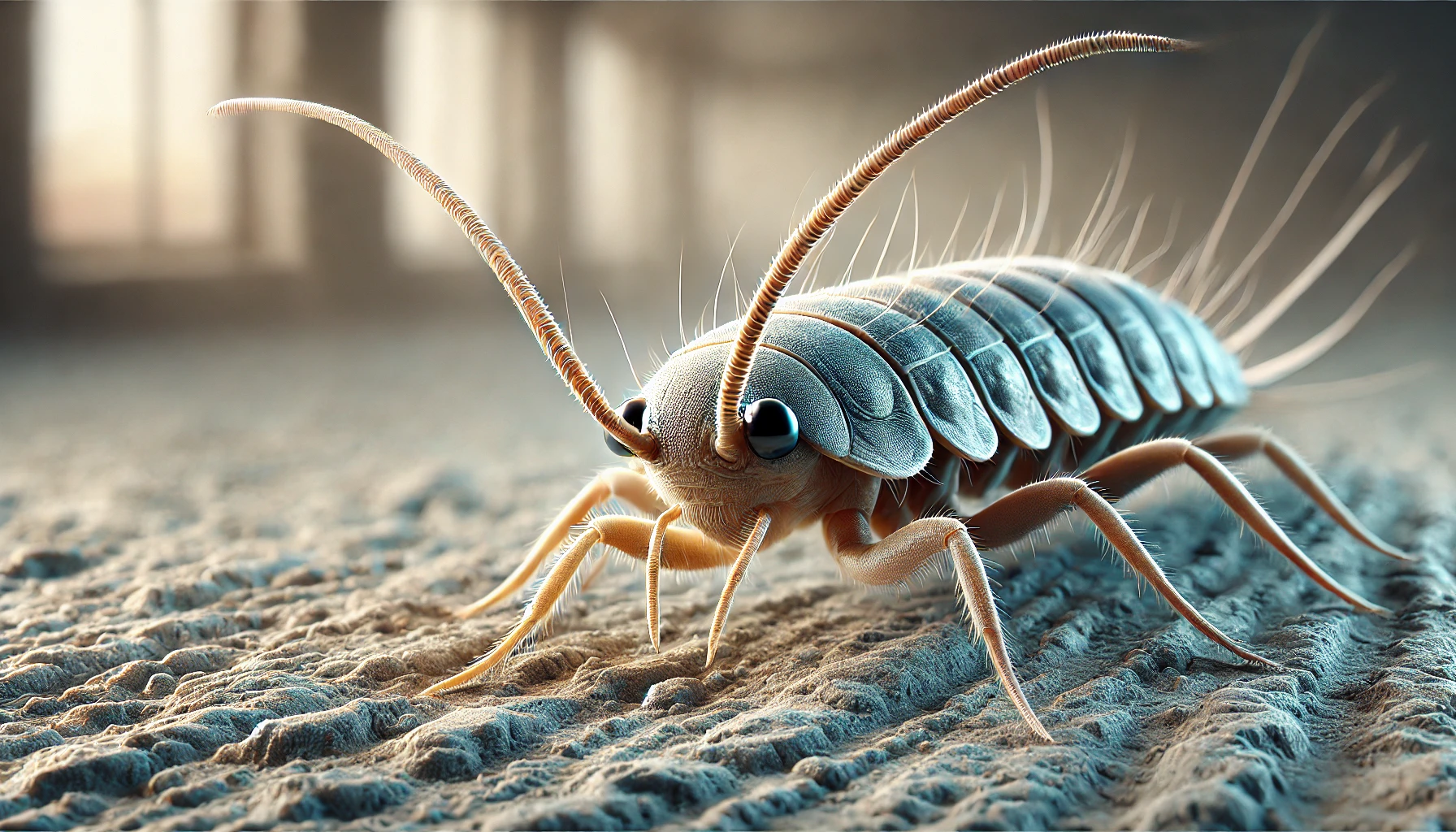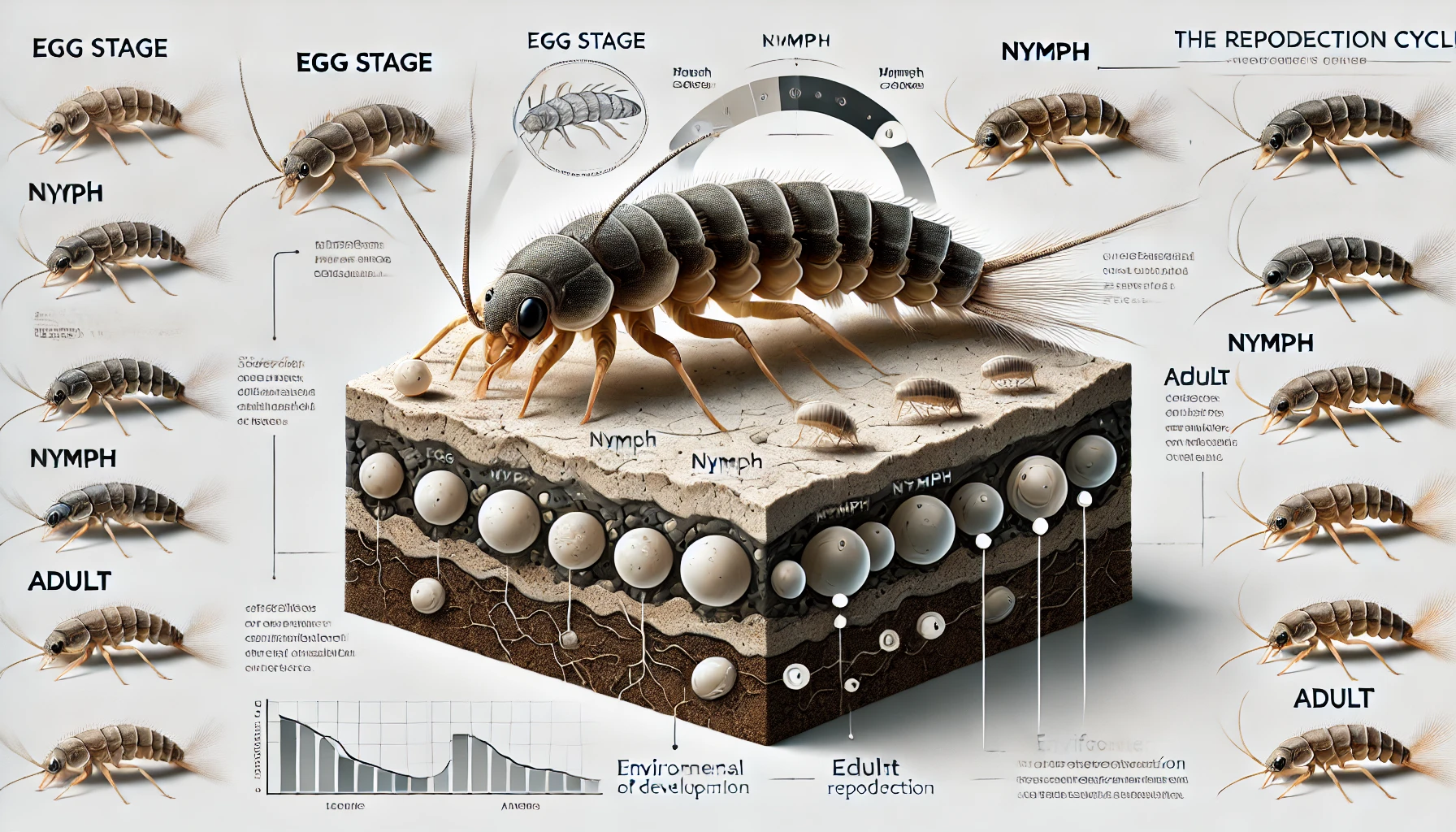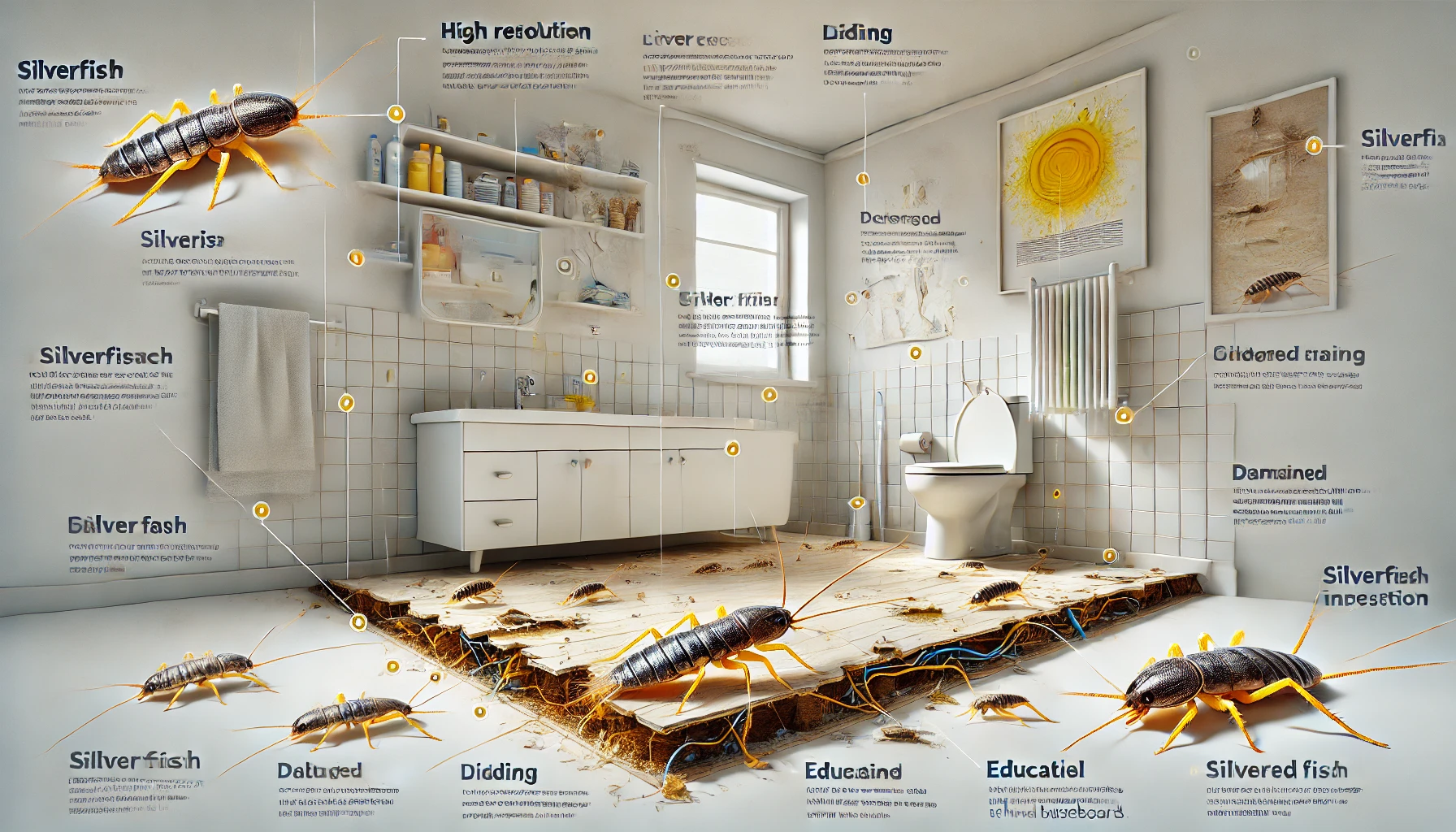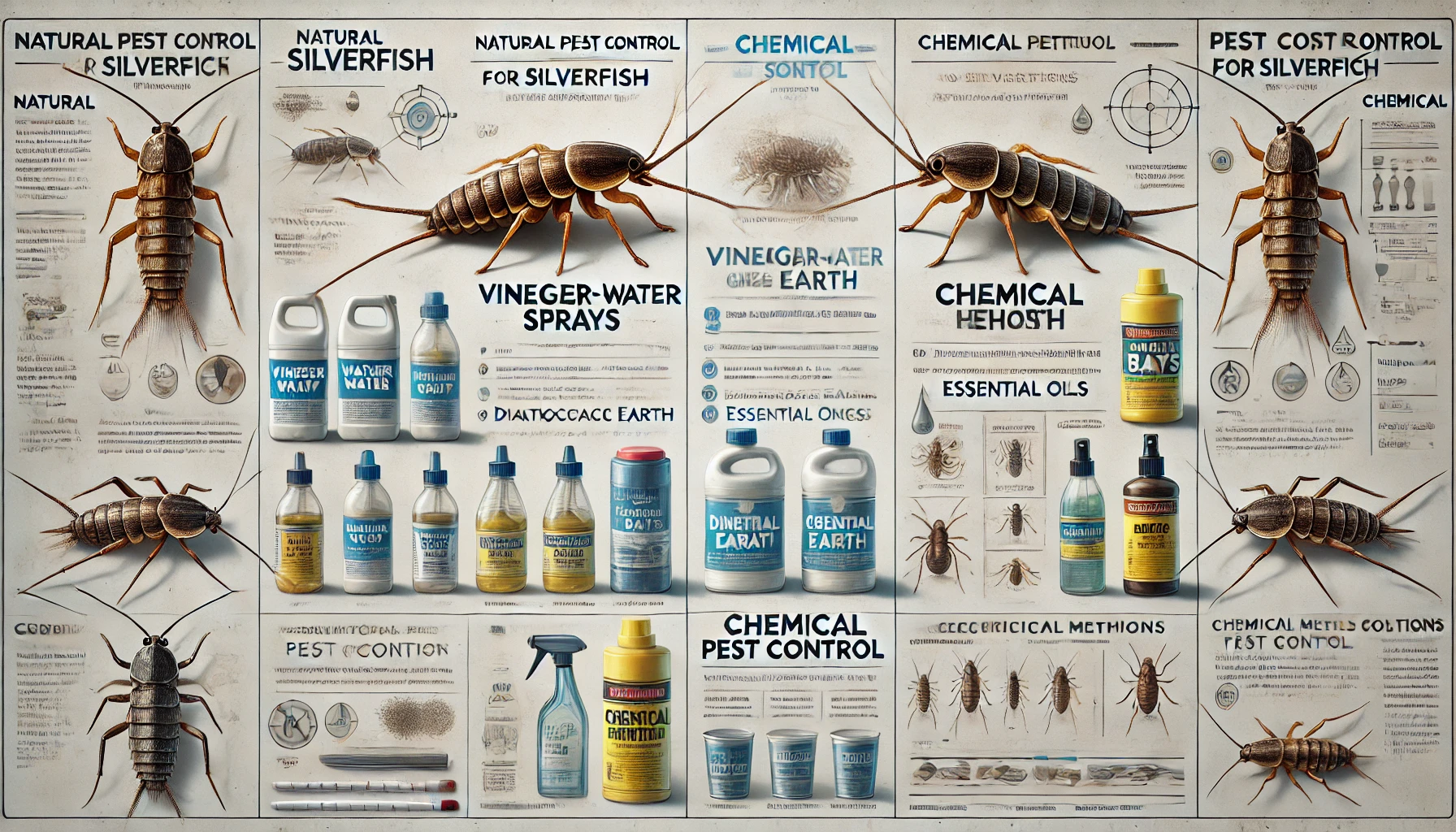Key Takeaways
-
Silverfish Lifespan: Silverfish can live for several years, with some individuals surviving for up to eight years under optimal conditions.
-
Reproduction: Female silverfish can lay up to 100 eggs over their lifetime. They mate through a unique courtship process and can store sperm for future fertilization.
-
Signs of Infestation: Look for visible sightings, damage to household items, and droppings as indicators of a silverfish infestation.
-
Control and Prevention: Reduce humidity, seal entry points, and use natural remedies or chemical treatments to control and prevent silverfish infestations.
 Silverfish (Lepisma saccharinum) are most ordinary household pests that thrive in damp, dark surroundings. These tiny, wingless insects are known for their speedy, fish-like movements, silvery scales, and nocturnal habits. Although they don’t directly harm humans, silverfish can cause proper damage to household items such as books, wallpaper, clothing, and even food. Comprehending their lifespan and reproductive habit is an important aspect of controlling these pests effectively and efficiently.
Silverfish (Lepisma saccharinum) are most ordinary household pests that thrive in damp, dark surroundings. These tiny, wingless insects are known for their speedy, fish-like movements, silvery scales, and nocturnal habits. Although they don’t directly harm humans, silverfish can cause proper damage to household items such as books, wallpaper, clothing, and even food. Comprehending their lifespan and reproductive habit is an important aspect of controlling these pests effectively and efficiently.
In this comprehensive article, we will explore the complete lifecycle of silverfish, their reproductive habits, and essential tips for preventing and managing infestations in your home. Whether you’re dealing with ongoing infestation or just simply want to know about these relentless pests, this guide will provide the required knowledge that is needed to take action.
Understanding the Silverfish Life Cycle
Silverfish experiences a different life cycle process that consists of several stages: egg, nymph, and adult. Not like many insects, silverfish do not go through metamorphosis; instead, they rise by molting often throughout their lives. The Egg Stage
Silverfish begin their life cycle with their first stage known as eggs, which are small, little and oval-shaped. Female silverfish lay their eggs in hidden, dark, and wet areas of the house, such as cracks in walls, under furniture, in the folds of garments, and even inside books and magazines which one cannot imagine. The number of eggs laid by a single female silverfish can vary, with some species depositing up to 100 eggs throughout their lifespan.
The Egg Stage
Silverfish begin their life cycle with their first stage known as eggs, which are small, little and oval-shaped. Female silverfish lay their eggs in hidden, dark, and wet areas of the house, such as cracks in walls, under furniture, in the folds of garments, and even inside books and magazines which one cannot imagine. The number of eggs laid by a single female silverfish can vary, with some species depositing up to 100 eggs throughout their lifespan.
The egg stage goes on from two weeks to two months, which entirely based on environmental conditions that are happening such as humidity and temperature. The warmer and more humid the environment, the faster the eggs hatch. This stage is an important part of the process for the silverfish’s survival, as it ensures that the next generation can emerge in an environment that suits their development. The Nymph Stage Once the eggs hatch, the silverfish larvae, or nymphs, emerge. These tiny, semi-transparent creatures resemble diminutive adults but are lighter in color and lack the silvery scales. The nymphs immediately begin to feed on organic matter such as starches and sugars, which are found in household items like books, paper, glue, and fabrics.
As nymphs grow, they undergo several molts, or shedding of their exoskeleton, before reaching maturity. Silverfish nymphs can molt up to 50 times during their development, and this process typically takes three months to several years. The duration of the nymph stage is influenced by factors such as temperature, food availability, and humidity. The Adult Stage After a number of molts, silverfish reaches its adult stage of the process. Adult silverfish can vary about ½ to 1 inch long and are covered in silvery-gray scales, which provides them a glossy look. They are also easily recognizable by their three long appendages extending from the rear of their bodies. Unlike many insects, silverfish continue to moult throughout their lives, although the frequency of moults decreases as they age.
Adult silverfish are most active at night when they search for food and can live for up to eight years under ideal conditions. Silverfish grow in damp environments and often be found in cellars, attics, bathrooms, kitchens, and other places with high humidity levels. Silverfish Lifespan Silverfish are long lasting pests whose lifespan can alter relying on environmental factors. Given their suitable conditions—warm temperatures, high humidity, and abundant food sources—silverfish can live for up to three years. However, in cooler or less humid environments, their lifespan can be significantly shorter.
The lifespan of silverfish is influenced by several factors, including the temperature and humidity levels of environment. Warmer temperatures tend to speed up the silverfish’s development, while lower temperatures can slow it down. Silverfish can survive for longer periods of time without food, as they can depend on moisture and organic matter present in their surroundings. This flexibilty is one of the various reasons silverfish are such resilient pests. Silverfish Reproduction Silverfish are prolific breeders, capable of laying hundreds of eggs throughout their lifespan. Reproduction occurs once a female has mated with a male. The mating process is unique, involving several stages of courtship and communication. Mating Rituals Silverfish mating is a fascinating process that begins with a courtship ritual. Before mating, the male silverfish deposits a spermatophore (a packet of sperm) that the female picks up to fertilize her eggs. The male will often chase the female and engage in a series of tactile interactions, including antennae touching and body positioning. This behavior can sometimes take hours, and during this time, the female decides whether to accept or reject the male’s sperm.
Mating typically occurs in hidden or secluded locations where silverfish feel most comfortable. Females generally mate multiple times throughout their lifespan and can store sperm for future fertilization. This ability allows them to fertilize eggs over an extended period. Egg Laying After mating, the female silverfish lays eggs in cracks and crevices, often in areas with high moisture levels. Silverfish can lay up to 100 eggs over their lifetime, and the eggs are typically placed in small clusters or individually. The egg-laying process can continue for several months, depending on the environmental conditions and the availability of suitable hiding places.
Once the eggs hatch, the cycle begins again, with nymphs emerging to start the next generation. Silverfish’s reproductive habits are a significant reason why they can quickly infest homes and become difficult to control.

How to Identify a Silverfish Infestation
Identifying a silverfish infestation in your home requires a keen eye and awareness of the signs these pests leave behind. While silverfish are nocturnal and tend to hide during the day, they are often active at night and are seen scurrying across floors or walls in search of food. Visible Sightings The most obvious sign of a silverfish infestation is spotting the insects themselves. Silverfish are fast-moving pests that hide in cracks, crevices, and damp areas. If you notice silverfish darting across your floors, walls, or counters at night, it strongly indicates that an infestation is present. Damage to Household Items Silverfish are known to cause significant damage to household items, particularly those that contain starches or sugars. Books, papers, clothing, and fabrics are common targets. Silverfish often feed on the glue used in books and wallpaper, leaving small, irregular holes or bite marks behind. They may also leave yellow stains or scales on the damaged items. Droppings Another common sign of a silverfish infestation is the presence of tiny black droppings, similar to pepper grains. These droppings are often found near areas where silverfish are most active, such as in bookshelves, pantries, or behind furniture.
How to Control and Prevent Silverfish Infestations
Silverfish can be difficult to control once they have established themselves in your home. However, you can use several effective methods to manage and prevent silverfish infestations. Environmental Modifications Silverfish thrive in humid, warm environments, so one of the most effective ways to deter them is by reducing moisture levels in your home. Use dehumidifiers in areas with high humidity, such as basements, kitchens, and bathrooms. Ensure proper ventilation by opening windows and using fans to reduce dampness in the air.Seal cracks, gaps, and crevices in walls, floors, and around pipes to prevent silverfish from entering your home. Store food in airtight containers and keep your living areas clean and free from clutter, which can provide hiding spots for these pests. Natural Remedies If you prefer a more natural approach to pest control, several remedies may help repel silverfish. Essential oils like lavender, citrus, and cinnamon are known to be effective at deterring these pests. You can soak cotton balls in essential oils and place them in areas where silverfish are active.
Diatomaceous earth is another natural solution that dehydrates silverfish and other pests. Sprinkle it in cracks, crevices, and around baseboards to help eliminate silverfish. Chemical Treatments In cases of severe infestation, chemical treatments may be necessary. Insecticides designed for silverfish control can be applied to cracks, crevices, and other areas where silverfish are likely to hide. Follow the manufacturer’s instructions carefully to ensure safe and effective use.
 If you feel things have gone out of control, it is advised to contact pest control professionals. Our team can provide a customized approach to protect your home effectively.
If you feel things have gone out of control, it is advised to contact pest control professionals. Our team can provide a customized approach to protect your home effectively.
Visit our Species, Control, and DIY Guide sections for additional resources on silverfish and ways to tackle a silverfish infestation.





